Venice Baroque Orchestra at Dumbarton Oaks
By Stephen Brookes • The Washington Post • April 11, 2016
The world of baroque music — with its courtly manners and faint aroma of wig powder — may have seemed, in the past, like a rather staid place. But a slew of adventurous and hard-charging new ensembles has changed all that, and few have been more exciting than the Venice Baroque Orchestra, which brought its vivid and incisive playing to Dumbarton Oaks on Sunday night.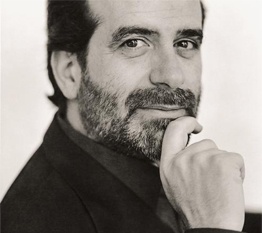 Andrea MarconThe evening was devoted largely to Vivaldi, and the focus on a single composer — featuring fully six of his concertos — might have become a little wearing on the ears. But from the opening notes of the Concerto in G minor, RV 577, the 18-member ensemble, under the direction of Andrea Marcon, found almost limitless worlds of drama and color to explore.
Andrea MarconThe evening was devoted largely to Vivaldi, and the focus on a single composer — featuring fully six of his concertos — might have become a little wearing on the ears. But from the opening notes of the Concerto in G minor, RV 577, the 18-member ensemble, under the direction of Andrea Marcon, found almost limitless worlds of drama and color to explore.
Playing on period instruments, pitching a pleasantly astringent string section against the plaintive warble of oboes, the woody, dove-like cooing of recorders, and the delicate underpinning of harpsichord and theorbo, the ensemble’s Vivaldi ranged from riveting to flat-out explosive. There’s a wildness in Vivaldi’s music that makes it so exciting, a sense of barely controlled fury in his huge, cascading waves of sound. But there’s also a heart-breaking vulnerability at its core, and the Venice players balanced them to perfection.
Although the focus was on Vivaldi, the ensemble also dispatched Handel’s stately Concerto Grosso in B-flat, Op. 3, No. 3 without incident, and it turned in a wonderfully deft and playful reading of Arcangelo Corelli’s Concerto Grosso in D, Op. 6, No. 4. But the most spectacular playing of the evening came in the arrangement of two works by Vivaldi and J.S. Bach by Anna Fusek, one of the group’s recorder players. Playing a sopranino recorder known as a “flautino,” Fusek turned in a virtuosic tour de force, soulful in its central Largo movement and almost impossibly agile in the closing Giga, which seemed to approach the velocity and weightlessness of light.
Sandbox Percussion at the Phillips Collection
By Stephen Brookes • The Washington Post • March 21, 2016
You’d expect a group calling itself Sandbox Percussion to take a playful approach to music — and you’d be right, as this New York-based quartet proved Sunday in a sophisticated but seriously fun afternoon of contemporary music at the Phillips Collection. Focusing on works written, more or less, last week by composers the group knows and works with, Sandbox brought out the immediacy, lack of pretension and high-end playfulness that seems — thankfully — to be revitalizing the world of contemporary music. And their jaw-dropping virtuosity made it all seem like . . . well, child’s play.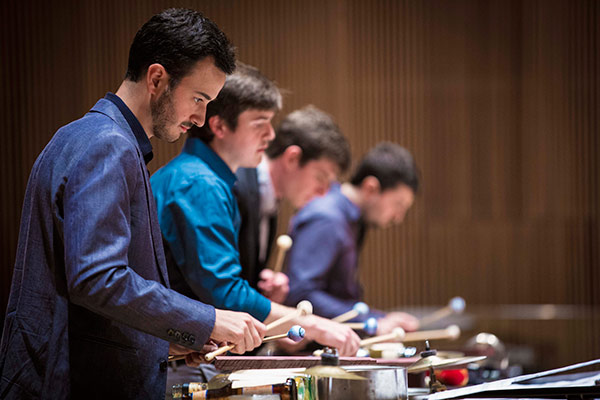 Sandbox Percussion Photo by Noah Stern WeberThe afternoon opened with stark simplicity: Steve Reich’s 1973 “Music for Pieces of Wood.” The work is as spare as its title, played with mallets on four small boards held by the players. But as the simple pulse it opens with is gradually extended, layers of rhythmic patterns build and shift against one another, growing with a kind of clockwork into an immense, implacable and deliriously expanding cathedral of sound.
Sandbox Percussion Photo by Noah Stern WeberThe afternoon opened with stark simplicity: Steve Reich’s 1973 “Music for Pieces of Wood.” The work is as spare as its title, played with mallets on four small boards held by the players. But as the simple pulse it opens with is gradually extended, layers of rhythmic patterns build and shift against one another, growing with a kind of clockwork into an immense, implacable and deliriously expanding cathedral of sound.
A work by Sandbox member Jonny Allen followed — the rolling, bluesy “Sonata” was captivating, with a sensuality rare in percussion music. But it was Andy Akiho’s “LIgNEouS1” — for which Ian David Rosenbaum on marimba was joined by the Amphion String Quartet — that revealed some of the afternoon’s most colorful imagination (and bravura playing). From its scherzolike third movement (which was played first; it’s a work in progress) to its elegiac second and driving, wildly intense first movement, it was clear that Akiho commands a vividly imagined sound world of exceptional depth and scope.
The four Sandbox players returned to form a circle around chimes and a bass drum for “Extremes,” an intricate work by Jason Treuting, one of the founders of the illustrious So Percussion ensemble. David Crowell’s “Music for Percussion Quartet” came next, contrasting the jangled rhythms of New York with meditative, shimmering sounds drawn from the composer’s time in Alaska.
The afternoon closed, as it began, with Reich. Sandbox played the composer’s iconic “Drumming (Part 1)” with such infectious vitality that an august audience member (94 years young, we were told) leapt to his feet for an impromptu jig in the aisle — a totally appropriate response. A roaring standing ovation brought Sandbox back for an encore, Akiho’s lilting “Karakurenai.”
Talea Ensemble at the Library of Congress
By Stephen Brookes • The Washington Post • March 13, 2016
The Library of Congress is famous for showcasing the world’s best chamber music groups — its concert series at the Coolidge Auditorium is one of the District’s must-hear events. But the Library is also a quiet champion of new music from living composers, and on Friday night, those roles came together in a performance by the New York-based Talea Ensemble, featuring four new cutting-edge, strikingly original works, three of them commissioned by the Library itself.
The evening opened with “SynchroniCities,” by Talea co-founder Anthony Cheung. Described by the composer as a “personal sonic travelogue,” this 2012 octet proved to be a playful, quick-witted work, deftly tying the external world of sound to Cheung’s own internal cultural landscape — a probing, fascinating piece, awash in vibrant colors and as charming in the ears as in the brain.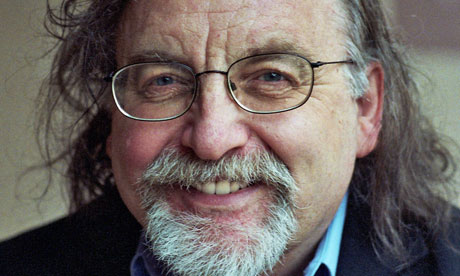 Brian FerneyhoughHarder to cozy up to was “Wild Romance,” for soprano and eight players, by the inventive Greek composer George Aperghis. Jabbing and stabbing, driven by staccato bursts of sound and an anxious, unsettled energy, the work seemed to chase elusive shadows and then flee from them in terror. (Which, yes, does sound like some romances.) Soprano Jane Sheldon turned in a stunning performance of this often scorching piece, the only work of the evening not commissioned by the Library.
Brian FerneyhoughHarder to cozy up to was “Wild Romance,” for soprano and eight players, by the inventive Greek composer George Aperghis. Jabbing and stabbing, driven by staccato bursts of sound and an anxious, unsettled energy, the work seemed to chase elusive shadows and then flee from them in terror. (Which, yes, does sound like some romances.) Soprano Jane Sheldon turned in a stunning performance of this often scorching piece, the only work of the evening not commissioned by the Library.
Julian Anderson’s “Van Gogh/Blue” is, you will not be surprised to hear, inspired by the paintings and letters of the iconic painter, and it’s as radiant and light-filled as anything Van Gogh ever painted. Tracing the course of a day in the countryside — from a rapturous evocation of early-morning light to a wild dance under a torrent of stars — it’s a vivid work, steeped in Anderson’s own distinctively meditative approach. Luminous playing from clarinetists Marianne Gythfeldt and Rane Moore — who moved gradually from the stage to the back of the hall, as if echoing the arc of the sun — added to the cosmic dimensions of this fine new work, heard in its U.S. premiere.
The music of Brian Ferneyhough — a composer inevitably linked with the love-it-or-hate-it “New Complexity” movement — can be daunting even to the most adventurous ears. And his “Contracolpi” (heard here in its world premiere) is, indeed, a rigorous and exceptionally complex new work. But it’s also jaw-dropping in its sonic imagination — a gorgeous cascade of elegant surprises, poetic to its molecules and absolutely riveting from first note to last. It’s probably unwise to declare a new work a masterpiece on only one hearing, but never mind: This is a masterpiece. Kudos to both the library and the Talea Ensemble, which played the work (and everything else on the program) with verve and immaculate virtuosity.
Arditti Quartet at the Phillips Collection
By Stephen Brookes • The Washington Post • February 1, 2016
Few — if any — string quartets have had as much impact on contemporary music as the Arditti Quartet. Through virtuosic performances of works that leave other ensembles scratching their heads, the Arditti has introduced — maybe “revealed” is a better word — some of the most important new music of the past four decades. So it was a particular treat to hear the Arditti at the Phillips Collection on Sunday, where the group explored the subtle connections between three modern French masterpieces, and suggested that “impressionism” in music may still be very much alive.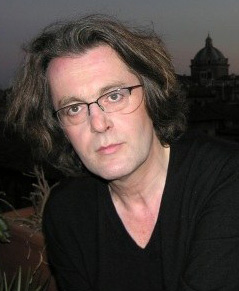 Composer Pascal DusapinThe afternoon opened with one of the most striking quartets of 20th-century modernism, Henri Dutilleux’s “Ainsi la nuit,” from 1976. Rigorously structured, integrated down to its molecules, the work unfolded with such naturalness and weightless imagination that it felt almost improvised. That, no doubt, was largely because of the Arditti players themselves, who brought not only clarity and near-infinite detail to the work (which often has the impressionistic, wildly colored feeling of a dream), but also a heady sense of spontaneity.
Composer Pascal DusapinThe afternoon opened with one of the most striking quartets of 20th-century modernism, Henri Dutilleux’s “Ainsi la nuit,” from 1976. Rigorously structured, integrated down to its molecules, the work unfolded with such naturalness and weightless imagination that it felt almost improvised. That, no doubt, was largely because of the Arditti players themselves, who brought not only clarity and near-infinite detail to the work (which often has the impressionistic, wildly colored feeling of a dream), but also a heady sense of spontaneity.
The Arditti has long been championing the music of Pascal Dusapin, a formidable French composer whose music is not known here nearly as well as it should be. His “Quartet V” from 2005 proved to be an instantly captivating work, opening with lurching, plucked rhythms from the cello and viola under an ethereal line from the violin, which all gathered in density before building to a furious climax. But the most astonishing part of the work was the long, ultra-quiet passage that closed it, growing ever more gripping as it slowly descended, whispering and beckoning, into an unfathomable silence.
There are few works more lush and light-filled than Maurice Ravel’s String Quartet in F, a work of pure magic from 1903. It made a fine close to the afternoon, although Arditti, to these ears, never seemed entirely at home in its ultra-polished elegance, sounding a bit unsure and even rough around the edges at times. But whatever the performance lacked in fine detail and effortless grace, it more than made up for in characterful expression, and the final “Vif et agité” movement was so full of life that it won the group an extended standing ovation.
Chad Hoopes and David Fung at the Terrace Theater
By Stephen Brookes • The Washington Post • January 29, 2016
The gifted young violinist Chad Hoopes has been rising — or maybe hurtling — toward international stardom since taking first prize in the junior division of the Yehudi Menuhin International Violin Competition in 2008. Now 21, with a string of recording and concert successes behind him, Hoopes made his Kennedy Center debut at the Terrace Theater on Thursday evening and displayed not only the jaw-dropping virtuosity that’s become almost the norm in young professionals, but also a gift for dramatic pacing and a distinctive, convincing sense of poetry.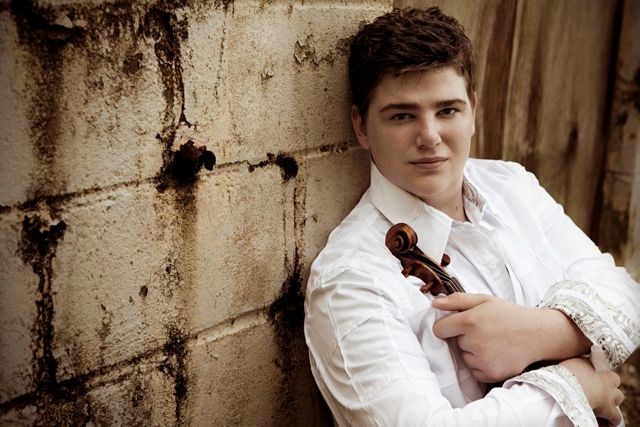 Accompanied by the Australian pianist David Fung, Hoopes opened with Antonín Dvorák’s pleasant little Sonatina in G for Violin and Piano, Op. 100. Written in 1893 as a piece for his children and flavored with American folk melodies, the piece isn’t too technically demanding, and you won’t work up much of a sweat plumbing its emotional depths either.
Accompanied by the Australian pianist David Fung, Hoopes opened with Antonín Dvorák’s pleasant little Sonatina in G for Violin and Piano, Op. 100. Written in 1893 as a piece for his children and flavored with American folk melodies, the piece isn’t too technically demanding, and you won’t work up much of a sweat plumbing its emotional depths either.
But the infinitely more compelling “Five Melodies, Op. 35” by Sergei Prokofiev more than made up for it. This remarkable set of miniatures was originally written as a “song without words” for soprano, but the version for violin allows for a much richer sonic texture and complexity, without sacrificing any of the intense lyricism. Hoopes and Fung turned in a glowing — even, to these ears, a little intoxicating — reading that shimmered with exotic colors, heightened by elegant little jabs of Prokofievan violence.
Hoopes’s assured and vivid playing was deftly supported by Fung, who seemed to dance with the keyboard all evening (and whose life-of-its-own “fauxhawk” threatened at times to steal the show). That interplay continued through a smiling-slash-snarling reading of Maurice Ravel’s feral, gypsy-flavored “Tzigane” and into Cesar Franck’s much-loved Sonata in A for Violin and Piano. It was here that Hoopes’s sense of lyricism, gripping dramatic flow and intellectual depth all came together in a bravura performance that won the duo a standing ovation. The evening ended with two encores, Fritz Kreisler’s charming “Syncopation” from 1925 and Mozart’s Adagio in E, for a quiet end to an impressive Kennedy Center debut.
Timo Andres and Yevgeny Kutik at the Phillips Collection
By Stephen Brookes • The Washington Post • January 18, 2016
Contemporary composers don’t have an easy time of it. If their music is performed at all, it’s usually shoe-horned in between Haydn and Dvorak, often to the alarm of all parties concerned. But the Phillips Collection has turned that clumsy model on its head by inviting a young composer — the gifted Nico Muhly — to design his own concert series, with free rein to choose everything from performers to programs. And if Sunday’s opening concert — which tied Muhly’s own music to that of Igor Stravinsky and Timo Andres — is any indication, the series will be a highlight of the Phillips’s winter season. Timo AndresThe concert showcased Andres himself at the piano, with the Russian American Yevgeny Kutik on violin. Opening with Muhly’s “Compare Notes,” a work premiered a few years ago at the Library of Congress by violinist Daniel Hope, Kutik immediately put his own distinctive stamp on the music. “Compare Notes” rings with a kind of direct, almost urgent authenticity. That seemed to suit Kutik perfectly; he turned in a vivid and captivating performance, and if his reading was perhaps less glowing than Hope’s, it was no less convincing — and maybe even more so.
Timo AndresThe concert showcased Andres himself at the piano, with the Russian American Yevgeny Kutik on violin. Opening with Muhly’s “Compare Notes,” a work premiered a few years ago at the Library of Congress by violinist Daniel Hope, Kutik immediately put his own distinctive stamp on the music. “Compare Notes” rings with a kind of direct, almost urgent authenticity. That seemed to suit Kutik perfectly; he turned in a vivid and captivating performance, and if his reading was perhaps less glowing than Hope’s, it was no less convincing — and maybe even more so.
That sense of directness and vitality set the tone for the entire concert, which may explain the program’s striking sense of cohesion. Or perhaps it was Kutik’s assured and full-bodied playing, which (supported impeccably by Andres) brought a kind of rough-and-tumble lyricism to two neo-classical works by Stravinsky, the 1932 “Duo Concertante” and the 1933 “Suite Italienne for Violin and Piano” (based on the Pulcinella ballet). Kutik, who was born in Minsk, has a clear affinity for Stravinsky’s earthy, rich chamber music, and his reading of the “Duo Concertante” was the most characterful — and maybe most satisfying — you’re ever likely to hear.
But the violinist may have reserved his most insightful playing for the premiere of “Words Fail,” a one-movement “song without words” he commissioned from Andres last year. The work, Andres explained, was an attempt to grapple with his own aversion to vocal music (words are “one thing too many” in music, he said) by exploring the voice-like qualities of the violin. From a descending lament, the work slowly gathers power through overlapping variations, becoming darker, more ambiguous and more complex before building to a soaring climax. Kutik and Andres gave a persuasive, deeply thoughtful reading to this involving new work.
Eric Ruske at the Library of Congress
By Stephen Brookes • The Washington Post • December 13, 2015
It’s not often that you hear a French horn recital dedicated to one of the Roman gods. But the two-faced Janus (who looks to both the future and the past) turned out to be an apt inspiration for hornist Eric Ruske, whose recital at the Library of Congress on Friday explored the ancient and almost primal sound of the instrument — by focusing on works from the 20th century. Eric RuskeAccompanied by pianist Gloria Chien, Ruske opened with Paul Hindemith’s “Sonata for Alto Horn and Piano.” There’s a brooding, nostalgic beauty running through this 1943 work, and Ruske and Chien played it with great sensitivity. But its most unusual feature — a spoken dialogue between the performers, spelling out the “yearning, melancholy longing” that the horn evokes — seemed a bit ham-handed, spoiling the very effect it was intended to enhance.
Eric RuskeAccompanied by pianist Gloria Chien, Ruske opened with Paul Hindemith’s “Sonata for Alto Horn and Piano.” There’s a brooding, nostalgic beauty running through this 1943 work, and Ruske and Chien played it with great sensitivity. But its most unusual feature — a spoken dialogue between the performers, spelling out the “yearning, melancholy longing” that the horn evokes — seemed a bit ham-handed, spoiling the very effect it was intended to enhance.
Just as nostalgic but infinitely more subtle was Gyorgi Ligeti’s “Trio,” from 1982. Ligeti called the piece a homage to Brahms, and it’s often paired (as it was at this recital) with Brahms’s seminal “Trio in E-flat major” from 1865. But it’s no mere exercise in neo-Romanticism. Written in a distinctive musical language Ligeti could only call “non-atonal,” the trio is an affecting and strikingly evocative work, weaving the tenderness of the opening Andante movement with the lurching brutality of the “Alla Marcia” and the tragic eloquence of the closing “Lamento.” Ruske, with Chien and violinist Jennifer Frautschi, turned in a memorable performance.
Vincent Persichetti’s 1972 “Parable VIII for solo horn, op. 120” is not only an engaging soliloquy, but it’s also a fine display piece for the palette of effects the horn is capable of, and Ruske turned in a virtuosic performance. But the real high point of the evening came in the closing work, the Brahms Trio, Op. 40. The sense of wistful nostalgia — tangible throughout the evening — was almost overpowering, especially in the sweeping Adagio, and Ruske turned in a glowing account. But it was violinist Frautschi (who is married to Ruske) who led the work — and maybe even stole the show with a commanding, incisive and absolutely riveting performance.

